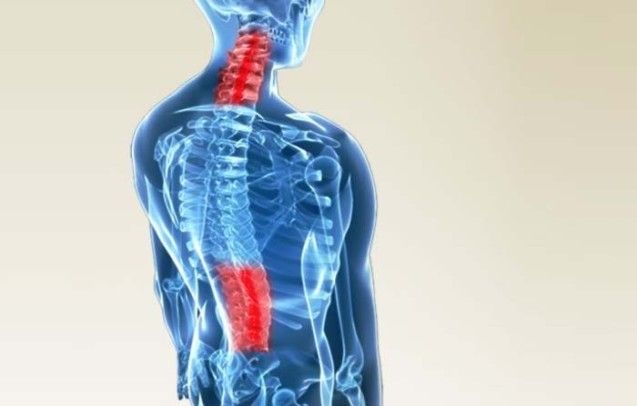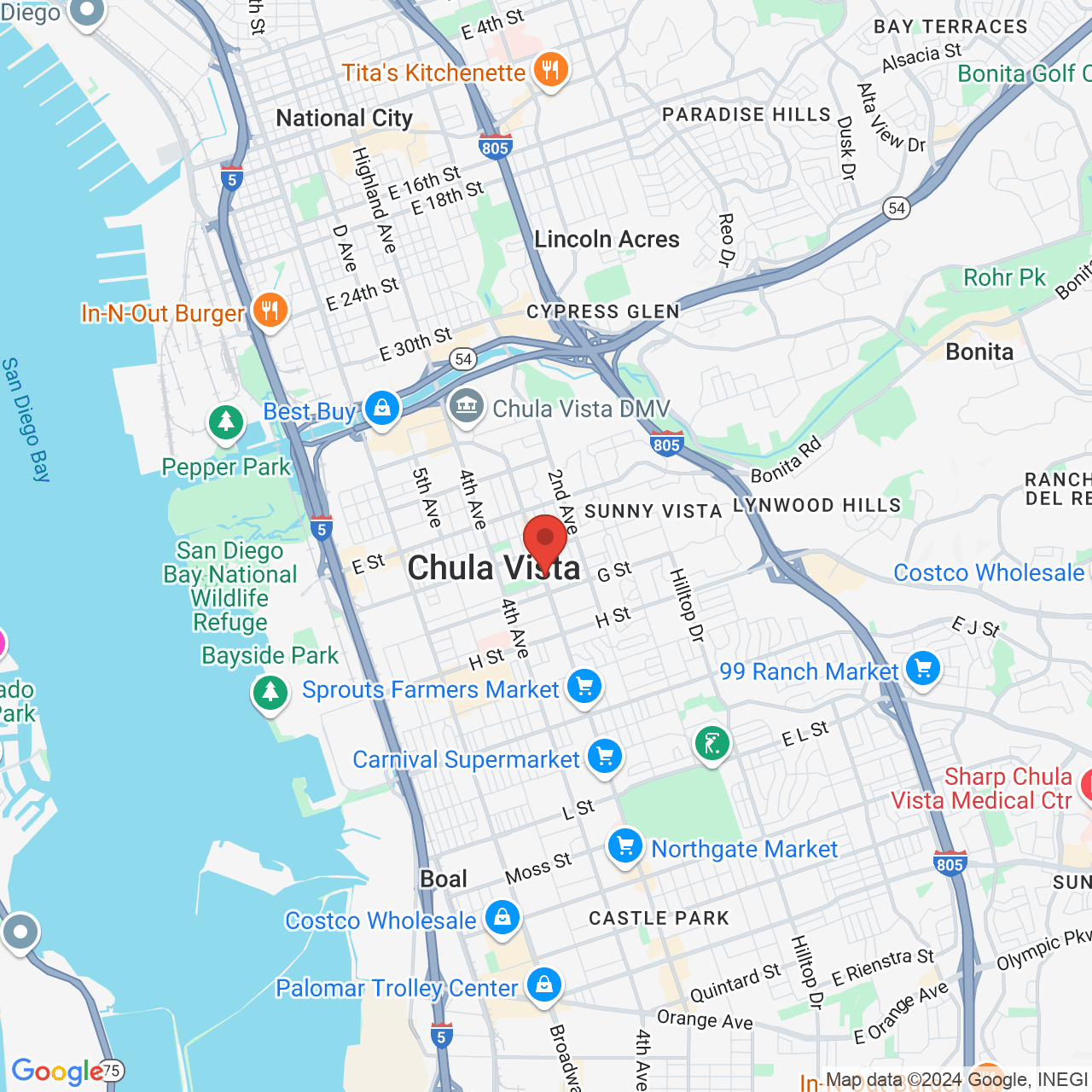Degenerative Disc Disease
Many of us have grown up hearing such terms as slipped disc, bulging disc, ruptured disc or herniated disc. But they are so commonly misconstrued. Many things can go wrong with a vertebral disc over a lifetime. A traumatic injury can crush or misplace a disc. An excessive pulling or lifting accident at home or on the job can force a disc out of position. And for some of us, simply getting older can cause a disc to deteriorate. Dr. Stan G. Langford III provides treatment for degenerative disc disease with the help of Cox Decompression and other techniques at his Chula Vista, CA, practice, providing effective relief from pain and discomfort.
A slipped disc has nothing to do with a disc that has moved, but rather a disc whose center fluid is bulging or has ruptured through the discs outer ring.
What Exactly is a Disc?
Vertebral discs are the shock absorbers that are found between each vertebra. A disc is sandwiched between two vertebrae supported by ligaments. Composed of collagen, discs have a tough outer core and a soft inner core. When you are born, these discs are mostly water.
As you get older, the discs slowly lose their water content and get harder, providing less soft and cushy support. Because they have little blood supply and few nerve endings, discs are unable to repair themselves.
Degenerative Disc Disease Symptoms

- Most experience chronic low back pain with periodic severe pain.
- Usually sitting worsens the pain.
- Bending, twisting, and lifting worsens the pain
- Lying down reduces the pain by relieving the strain on the disc space.
- There may be numbness, tingling in the legs if the degeneration is located in the lumbar spine.
- Pain and numbness and tingling in the neck, shoulder blades, arms and hands may be experienced if the degeneration is in the cervical spine.
Degenerative Disc Diseases We Commonly Treat
Disc disorders are generally classified as contained discs or non-contained discs. Contained discs are discs that are essentially intact, but protruding where they do not belong. Non-contained discs are ruptured discs that also may protrude into another area of the spine, leaking their fluid and causing havoc.
Degenerative Disc Disease or Spondylosis
As we age, the water and protein content of the body’s cartilage changes. This change results in weaker and thinner cartilage. Because both the discs and the joints that stack the vertebrae (facet joints) are partially composed of cartilage, these areas are prone to degenerative wear and tear over time. The gradual deterioration of the disc between the vertebrae is called degenerative disc disease (also medically referred to as spondylosis).
As the disc becomes thinner, it becomes less effective as a shock absorber. With less space between the vertebrae, nerves may become compressed, causing them to swell and signal pain. As the disc’s ability to absorb the stress we put on our spines, other parts of the spine become overloaded, which leads to more irritation, inflammation, fatigue, muscle spasms and back pain. Bone spurs, sometimes called osteophytes, may begin to form around the disc space as well, further irritating the condition.

Herniated Disc
The terms herniated disc and slipped disc are often used interchangeably. Ironically, a slipped disc has nothing to do with a disc that has moved, but rather a disc whose center fluid is bulging or has ruptured through the discs outer ring.
A common non-contained degenerative disc disorder is a herniated disc, which has ruptured, usually at its weakest point. The fluid inside herniated discs is an irritant to the delicate soft tissues of the spinal cord, none the least being the nerves. Nerves that have become exposed to this fluid often swell in response. In some cases, parts of a herniated disc’s tough outer shell can break off into the spinal canal, causing further irritation.
The vast majority of herniated discs occur in the lower back or lumbar region. When a lumbar herniated disc presses on a nerve root, it can cause radiating pain, numbness and weakness in other areas of the body, including the buttocks, leg, ankles and toes. Cervical, or neck, discs that have herniated can cause radiating pain and numbness down an arm and into the wrist and hand. Other types of symptoms include shoulder pain and numbness, as well as muscle and reflex weakness.
Bulging Disc
A common contained degenerative disc disorder is the initial stage of a herniated disc, called a bulging disc. Bulging discs may push into the spinal canal and pinch spinal nerves. When this occurs, pain in the area of the bulging disc may be experienced; pain, numbness, weakness and tingling may also be felt in the arms and legs. In many cases, a person with a herniated disc will not feel back or neck pain with a bulging disc condition. Therefore, unfortunately, a bulging disc may go undetected until the next stage of herniation, a ruptured disc.
Ruptured Disc or Torn Disc
As degeneration progresses and the outer wall of the disc continues to weaken, the disc becomes at risk of escalating to a ruptured disc, also called a torn disc, where the outer wall breaks open and the interior gel-like fluid is leaked out. When this occurs, pressure is put on nerve roots exiting the spinal cord or on the spinal cord itself, causing pain and other disabling symptoms.

Degenerative Disc Disease Treatment
Physical therapy, anti-inflammatory medication, bed rest, narcotic pain medication, muscle relaxant medication, epidural steroid injections and nerve blocks are all aimed at symptom relief only and will not cure a disease. The main surgical approach has been to eliminate the disc entirely and fuse the bones above and below the disc. Unfortunately, the success rate of lumbar fusion or cervical fusion surgery is notoriously poor and repeat surgery within 7 years following the initial surgery is necessary nearly 100% of the time.
Decompression is currently the only treatment available that can reduce or eliminate the symptoms of degenerative disc disease by treating the cause of the degeneration.
With the help of Cox Decompression, Dr. Langford can slowly separate the bones, reducing pressure within the spinal discs. During treatment, negative pressure is created, forcing water, oxygen, and nutrients into the disc — rehydrating the degenerated disc. Repeated decompression treatments retract the gel-like core, the nucleus pulposus, back to the center of the disc. Recentering the nucleus pulposus relieves direct pressure on the nerve caused by the disc degeneration.
Following Dr. Langford’s decompression technique, Erchonia cold laser treatment is administered to promote rapid healing of the damaged soft tissue, reduce swelling, and relieve pain.
Achieve Effective Pain Relief
If you want to learn more about degenerative disc disease and chiropractic treatment options, message us online. Dr. Langford can work with you to develop a customized treatment plan tailored to your unique situation.


